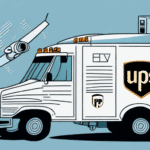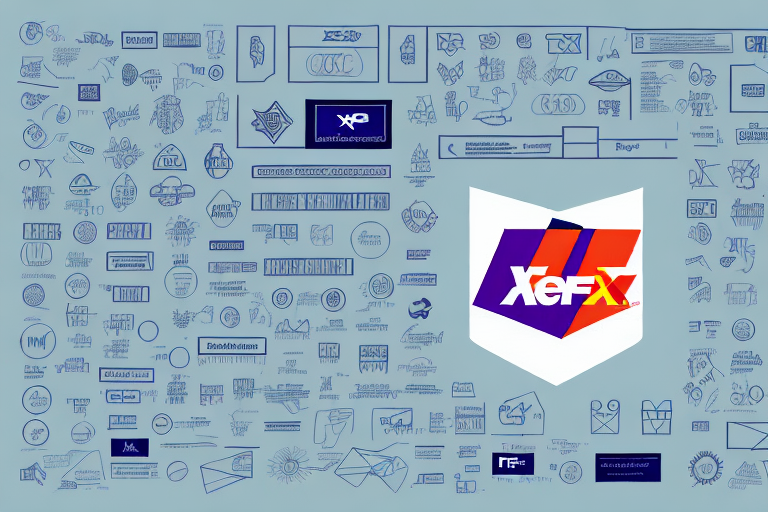The Importance of the Rating Engine in UPS Worldship
Rate shopping is a crucial aspect of the shipping process, and the Rating Engine in UPS Worldship plays a significant role in optimizing shipping efficiency. The Rating Engine calculates shipping rates based on various parameters such as destination, weight, package dimensions, and service levels. It also factors in discounts, special services, and other customizable options. Without the Rating Engine, determining accurate shipping costs would be challenging, potentially leading to unexpected expenses and dissatisfied customers.
Moreover, the Rating Engine in UPS Worldship allows for real-time rate updates, ensuring customers are always charged the most up-to-date shipping costs. This responsiveness is essential in today's fast-paced e-commerce environment, where customers expect quick and accurate shipping information. The Rating Engine also provides detailed reports on shipping costs, enabling businesses to analyze their shipping expenses and make informed decisions to optimize their shipping processes. Overall, the Rating Engine in UPS Worldship is an indispensable tool for any business aiming to provide reliable and cost-effective shipping services.
Common Causes of Rating Engine Exceptions in UPS Worldship
Incorrect Package Information
One of the most common reasons for the Rating Engine Exception error is incorrect package dimensions or weight input. Inaccurate data can lead to erroneous shipping rates, disrupting the entire shipping process.
Invalid Addresses
Another frequent cause is invalid destination or origin addresses. If the system cannot verify the addresses, it fails to calculate a valid shipping rate.
Prohibited Items and Account Issues
Shipments containing prohibited items or issues with account and payment information can also trigger the Rating Engine Exception error. Additionally, temporary system outages or connectivity issues with UPS servers may be responsible.
For more detailed information on UPS error codes and troubleshooting, refer to the UPS Support Portal.
Troubleshooting Rating Engine Exceptions
Verify Package Details
Start by ensuring that the package dimensions and weight are accurately entered into the system. Use a reliable scale and measuring tools to obtain precise measurements.
Validate Addresses
Double-check the destination and origin addresses for any errors or omissions. Utilize address validation tools to ensure accuracy.
Check for Prohibited Items
Review the shipment contents to confirm that no prohibited items are included. Refer to the UPS Restricted and Prohibited Items List for guidance.
Update System Software
Ensure that UPS Worldship software is up to date. Outdated software can cause compatibility issues and lead to errors.
Contact UPS Support
If the error persists after verifying the above, contact UPS Customer Support for further assistance.
Best Practices to Prevent Rating Engine Exceptions
Accurate Data Entry
Input accurate package dimensions and weight. Consider implementing a double-check system to minimize human error.
Regular Software Updates
Keep UPS Worldship software updated to the latest version to benefit from the latest features and bug fixes.
Utilize UPS Tools
Leverage additional UPS tools such as UPS Worldship Batch Shipping or UPS CampusShip, which can help streamline shipping processes and reduce errors.
Proper Labeling
Ensure that all packages are properly labeled with correct shipping and return addresses, and use high-quality label paper and compatible printers to avoid scanning issues.
Regular System Audits
Conduct regular audits of your shipping system to identify and rectify any discrepancies or potential issues before they affect operations.
The Impact of Rating Engine Exceptions on Shipping Operations
Encountering a Rating Engine Exception error can lead to significant delays in the shipping process, resulting in missed deadlines and frustrated customers. Inaccurate shipping rates may also lead to unexpected expenses, negatively impacting the company's bottom line.
To mitigate these impacts, businesses should implement regular system checks and updates to identify and resolve issues proactively. Clear and transparent communication with customers regarding any delays or issues can help maintain trust and loyalty.
Investing in a more advanced and reliable rating engine system may also be beneficial. While it may require an initial investment, a robust system can ensure accurate and consistent shipping rates, minimizing the risk of errors and enhancing overall customer satisfaction.
Advanced Solutions for Persistent Rating Engine Exceptions
Configure Advanced Settings
Adjusting advanced settings within UPS Worldship can help tailor the Rating Engine to better suit your business needs. This includes customizing service preferences, default dimensions, and handling special shipping scenarios.
Integrate with Other Software
Integrating UPS Worldship with other shipping software solutions can enhance functionality and provide additional layers of error checking and data validation.
Consult with Experts
If recurring issues persist, consider consulting with a UPS integrator or technical expert. Professional assistance can help identify and resolve underlying issues more effectively.
Regular Monitoring and Maintenance
Implement a schedule for regular monitoring and maintenance of your shipping system to promptly address any emerging issues and ensure optimal performance.
Understanding and Resolving Rating Engine Exception Error Codes
The Rating Engine Exception error often comes with specific error codes that provide insights into the underlying issue. Common error codes include:
- 111033: Indicates an invalid destination or origin address.
- 110027: Signifies a problem with payment information.
Understanding these codes is crucial for effective troubleshooting. For a comprehensive list of UPS error codes and their meanings, visit the UPS Support Portal.
By addressing the specific issues indicated by these error codes, businesses can more efficiently resolve Rating Engine Exceptions and maintain smooth shipping operations.
Optimizing the Rating Engine Configuration in UPS Worldship
Update Account Information
Ensure that all account and payment information within UPS Worldship is current and accurate to prevent billing issues that may cause rating errors.
Customize Rating Settings
Tailor the Rating Engine settings to match your business requirements. This includes selecting preferred shipping services, adding custom packages, and setting default units for dimensions and weight.
International Shipping Configurations
If you handle international shipments, configure the Rating Engine to accurately calculate rates for different countries and ensure that customs documentation is correctly entered.
Exception Handling Rules
Define rules for handling exceptions such as incorrect addresses or mismatched package dimensions. This proactive approach can help manage and resolve errors before they disrupt the shipping process.
Regular Reviews and Updates
Periodically review and update Rating Engine settings to align with evolving business needs, shipping policies, and UPS service updates.
By following these best practices and leveraging the advanced features of UPS Worldship, businesses can minimize the occurrence of Rating Engine Exceptions, ensuring efficient and reliable shipping operations.






















